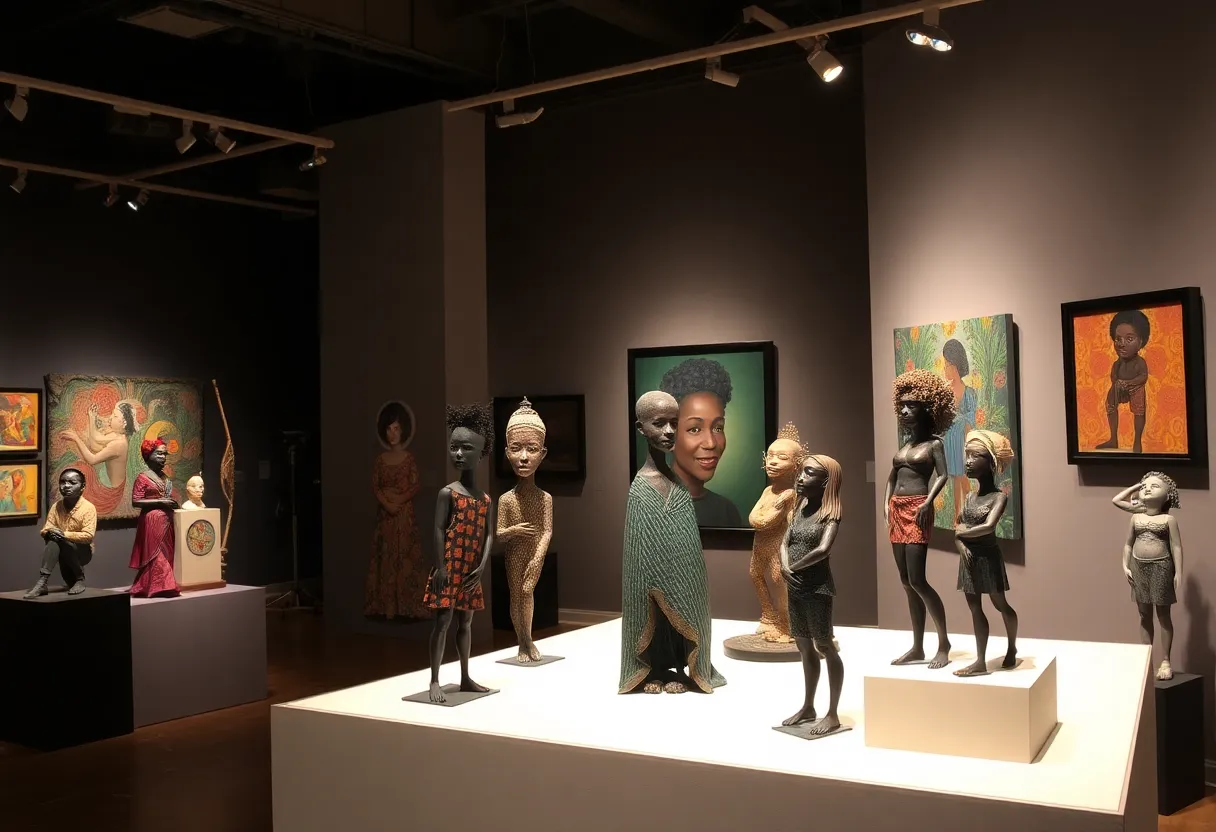News Summary
Lexington, Kentucky celebrates Isaac Scott Hathaway, a cultural pioneer born in 1872. His contributions to the arts and education for African Americans inspire many, fostering representation in art. Hathaway’s journey, influenced by his family’s resilience, includes significant achievements in sculpture, education, and developing unique mediums. His legacy continues to impact future generations of artists and educators.
Lexington, Kentucky – A celebration is underway for Isaac Scott Hathaway, a remarkable cultural pioneer born on April 4, 1872, who made significant contributions to the arts and education, particularly for African Americans. Hathaway’s work has left an indelible mark on the art community, and his legacy continues to inspire artists and educators alike.
Hathaway was born to Reverend Robert Elijah Hathaway and Rachel Scott Hathaway, with a familial history steeped in resilience; his paternal grandfather was formerly enslaved. This backdrop of struggle and triumph deeply influenced Hathaway’s artistic journey. It was during his childhood, when he visited a museum, that he realized a glaring absence of art representing African Americans. This inspired him to dedicate his life to creating and showcasing art that represented his people.
Initially, Hathaway pursued higher education in art, first attending Chandler Junior College in Lexington before transferring to the New England Conservatory of Music in Boston for formal music studies. His artistic sensibilities began to flourish when he created his first sculpture—a bust of Bishop Richard Allen, the first bishop of the African American Episcopal Church. Seeking further artistic training, he later attended the Cincinnati Art Academy, where he focused on ceramics.
In 1897, Hathaway returned to Lexington, where he began his career as an educator at Keene High School. He opened his first art studio, specializing in educational plaster casts of human anatomy, which provided students with hands-on experience in the arts. Hathaway not only taught but also honed his sculptural skills, creating various works, including a notable death mask of the renowned abolitionist Cassius Marcellus Clay.
In 1907, Hathaway moved to Washington, D.C., where his artistic focus broadened to include busts of pivotal African American figures, such as Frederick Douglass, Booker T. Washington, Paul Laurence Dunbar, and W.E.B. Du Bois. His work during this time solidified his status as an influential artist and cultural advocate. By 1915, he relocated to Pine Bluff, Arkansas, where he continued to teach ceramics and develop his craft.
Hathaway’s career reached new heights in 1937 when he moved to Tuskegee, Alabama, to establish the Ceramics Department at Tuskegee University. His experience in teaching and developing art programs had a lasting impact on future generations of artists. In 1945, Hathaway made significant strides in his artistic process when he developed Alabama kaolin clay as a unique medium for his works, marking another milestone in his creative journey.
Among his notable commissions, Hathaway worked with the U.S. Mint’s Fine Arts Commission, creating a half-dollar coin bearing the likeness of Booker T. Washington, which was minted from 1946 to 1951. He subsequently designed a second coin featuring George Washington Carver, which circulated from 1951 to 1954. These achievements not only highlighted his talent but also helped promote the contributions of African Americans to American history and culture.
After an extensive career in art and education, Hathaway served as the Director of Ceramics at Alabama State College until his retirement in 1963. His dedication to teaching and the visual arts garnered him numerous honors, including honorary degrees and fine arts awards from various institutions. This recognition underscored his influence in both educational and artistic circles.
Hathaway passed away in March 1967 at his home in Montgomery, Alabama, leaving behind a legacy of creativity and commitment to the arts. His contributions continue to inspire future artists and educators, highlighting the importance of representation and cultural heritage in the world of art.
Deeper Dive: News & Info About This Topic
HERE Resources
Additional Resources
- Mansfield News Journal: History Made in Lexington’s 200 Medley Relays
- Wikipedia: Isaac Scott Hathaway
- Kentucky.com: Local News on Isaac Scott Hathaway
- Google Search: Isaac Scott Hathaway
- Richland Source: Lexington’s 200 Medley Relay Team
- Encyclopedia Britannica: Isaac Scott Hathaway

Author: STAFF HERE LEXINGTON KY STAFF
The LEXINGTON STAFF WRITER represents the experienced team at HERELexingtonKY.com, your go-to source for actionable local news and information in Lexington, Fayette County, and beyond. Specializing in "news you can use," we cover essential topics like product reviews for personal and business needs, local business directories, politics, real estate trends, neighborhood insights, and state news affecting the area—with deep expertise drawn from years of dedicated reporting and strong community input, including local press releases and business updates. We deliver top reporting on high-value events such as Woodland Art Fair, Crave Food and Music Festival, and Railbird Festival. Our coverage extends to key organizations like Commerce Lexington and Blue Grass Community Foundation, plus leading businesses in education, manufacturing, and technology that power the local economy such as University of Kentucky, Toyota Motor Manufacturing, and Lexmark. As part of the broader HERE network, including HEREBowlingGreen.com and HERELouisville.com, we provide comprehensive, credible insights into Kentucky's dynamic landscape.





